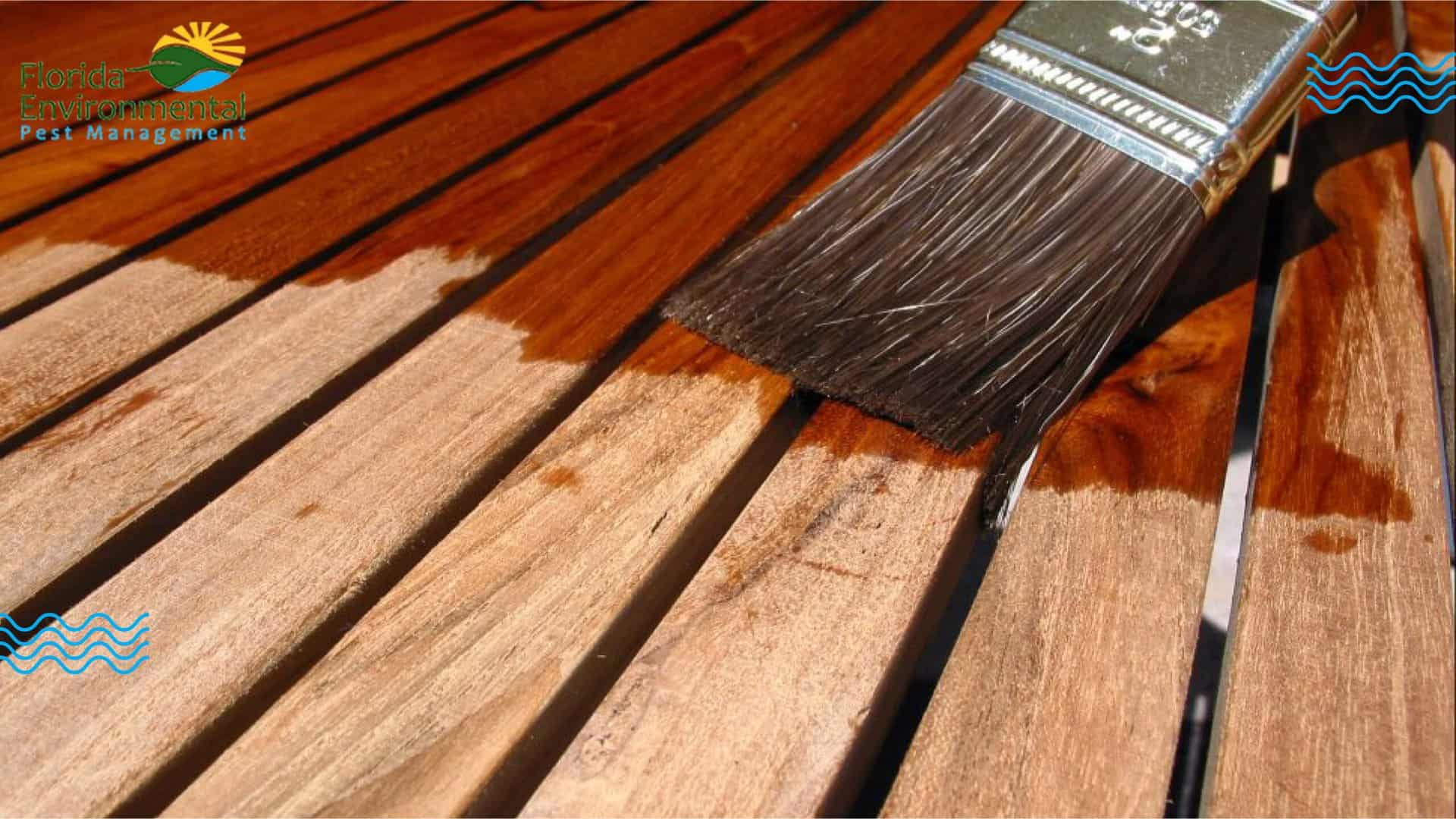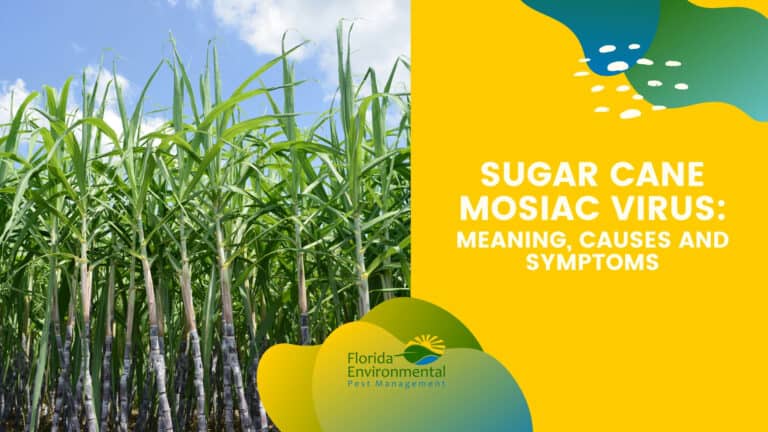Termites are more than an annoying pest problem. They feed on wood, and as such, can cause structural damage to your home. In the United States, you’ll find two types of termites: subterranean termites and drywood termites. Subterranean termites are those that live underground. They require contact with the soil to survive. Both types of termites are common in South Florida. Let’s take a look at some dry wood termite treatments.
What are Dry Wood Termites?
Unlike subterranean termites, drywood termites live in wood above ground and do not require moist soil contact for survival. They’re the ones you have to worry about damaging the wood in your home.
Typically, drywood termite infestations come from wood that’s been exposed to moisture before – due to a storm or leak. But it’s not just your home they can wreak havoc in. Termites can also call wooden furniture and other wooden objects home. Termites eat anything cellulose-based, including newspaper.
Signs of a Drywood Termite Infestation
Frass
Otherwise known as termite droppings, frass looks like small pellets. Termite fecal pellets are hexagonal in shape and resemble wood. As termites drill small tunnels into the wood and eat it, they will eventually expel it.
You may notice small piles. You’ll commonly find it on windowsills or the floor. If you see any kind of wood debris that resembles sawdust, it is a good sign that you’ve got termites making a meal.
Drywood Termite Swarmers
Termite activity, known as swarms, is common during the warmer weather months – typically in the spring and summer. It’s also common to find them after a rainstorm. When you see a termite swarm, it’s because they’re looking for a new location to start a colony. Colonies don’t generally produce a swarm until they’ve been established for a few years.
Swarming termites inside your home is an indication that you may have a problem. Most of the time, indoor swarms won’t survive long enough to establish a new colony. If you see a swarm outside your home, an infestation could be present – or a colony is somewhere nearby.
Kicker Holes
These are small holes created in wood as a result of the termites eating it. If you notice the frass is scattered, the higher up the kicker hole is likely to be. If the frass is in a neat pile, you can expect the kicker holes to be lower.

Drywood Termite Treatments: Treatment Methods to Try
If you want to get rid of drywood termites, you may not have to call in the pest control experts right away.
Thorough Inspection
Once you’ve confirmed a termite infestation, it’s time to inspect. Look at the exterior door frames. Pay close attention to eaves around the outside of your home and the wall voids of the attic, as well as any exposed wood. Carry a flashlight with you for dark spaces. Have a screwdriver on hand to probe termite galleries. Inspect all ceiling joists, support posts, and wooden construction throughout your home.
Look for signs of a termite infestation. If you find wings, it’s a pretty good indicator of a heavy infestation, which may mean calling in professionals to handle treatment.
Spot Wood Treatment
Spot treatment may help combat smaller infestations. Drill holes every 10 inches into the infested wood. Once you feel resistance, you know you’ve hit the nest. Fill the hole with a termiticide. Fill the hole with putty or a wood patch.
Essential Oils
Alternatively, you can try essential oils like orange oil or neem oil. This approach kills the termites more slowly, as it prevents them from being able to lay eggs or shed their skin.
To use this method:
- Mix two cups of water with a few drops of dish soap.
- Add 10 drops of either essential oil.
- Add to a spray bottle and shake.
- Apply the mixture to the infected wood.
Boric Acid
You can also use boric acid. Many commercial insecticides use boric acid as an active ingredient. Boric acid dehydrates the termites and causes their nervous systems to shut down. Spray all crevices in your walls, ceilings, and floors with boric acid.
Diatomaceous Earth
Another option is diatomaceous earth. It also works by dehydrating the termite. Sprinkle it around any areas where you suspect the termites to be active. Once they crawl over it, it will absorb into their exoskeleton and get to work.
Dealing with Drywood Termites in South Florida?
Drywood and subterranean termites aren’t the only ones out there. In South Florida, there are nearly ten common species of termites found throughout Miami-Dade, Palm Beach, St. Lucie, Broward, and Martin counties.
If you suspect a termite problem in your home or office, give the team at Florida Environmental a call. We know how to handle infested wood, so you can achieve termite control. To avoid costly structural damage and extensive infestations, schedule a termite inspection today.
FAQS:
What Are The Signs of Dry Wood Termites?
Wings on windowsills or flying termites on the exterior of your home are signs of termite infestation. Wood that has been honed or carved out to provide a hollow sound or appearance. Damage caused by dry wood termites can be identified by the ease with which a pocket knife or flat-bladed screwdriver can be used to create a hole in the wood.
How Can I Get Rid Of Dry Wood Termites?
Fumigation, pesticide spot treatments, heat, shock, microwave, and liquid nitrogen spot treatments are all options for pest control. In some cases, heat treatments have been employed to treat the entire building. Dry wood termites are difficult to spot because they live and feed deep within the wood or other substance they feed on.
What Temperature Does It Take To Kill Dry Wood Termite Colonies?
To effectively manage dry wood termites, temperatures must be between 120°F and 140°F. For dry wood termites to die, the temperature inside the wood must be 120 degrees Fahrenheit for at least 35 minutes.
How Often Should You Have Your Home Treated For Termites?
As a preventative measure, homeowners should have their homes inspected for termites at least once a year. According to the treatment method and evidence of current activity, termite treatments might last anywhere from 5 to 13 years.
How Long Does It Take For Termites To Destroy A House?
Infestation by termites can cause significant structural damage, but it usually takes two to eight years to identify the damage unless you actively search for it.





